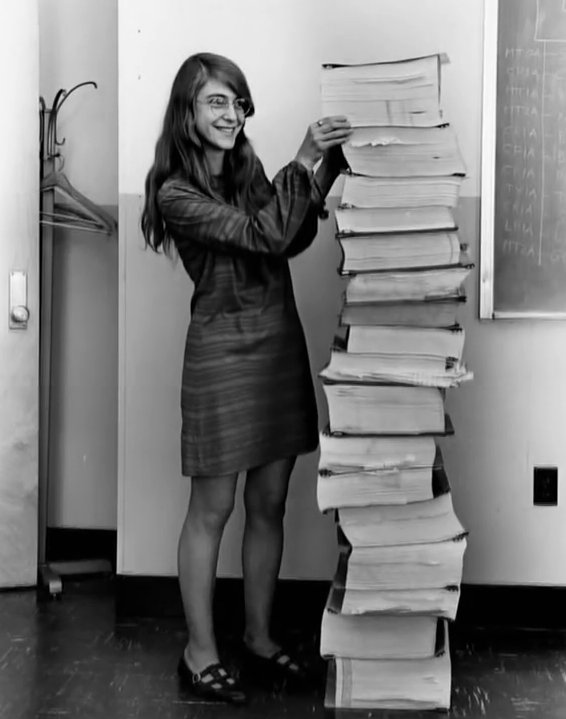It had long been tradition that operating calculating machines was “women’s work”; it was thought to be just keypunching, like tying. Women programmed and operated the punch card machines to produce calculations for the Manhattan Project. Despite the tendency of the project physicists to minimize their contribution, this was demanding work, much more than just moving cards from slot to slot — they were usually given requirements from the tech people, but often designed the approach and set up the calculations themselves.

The bias that “women do the mere programming” extended into the early days of the computer, and it meant that many of the earliest and most pioneering programmers were women, learning hands-on to do things that had never been done before. We all know about Amazing Grace Hopper, who wrote the first compiler.
Margaret Hamilton earned her BA in math from Earlham College, but obviously learned about programming on the job—there was no other way. In the photo above, she is standing in front of the printouts of the code for the Apollo guidance system, a lot of which she wrote and which she oversaw.
She’s now a tech CEO and won the ‘86 Lovelace Award and the NASA Exceptional Space Act Award.
The engineers weren’t all boys with crewcuts, short sleeve oxford shirts, and narrow black ties. That’s just a fairy tale they told for a while.
Something to remember. I suppose today’s kids are ho-hum about these recoveries of memory, but I think they’re pretty neat.
The first documented programmer, . I’ve always found the reasoning that Babbage presumably came up with a universal programmable computing machine without any idea how it would execute programs, with someone else having to write the very first ones for him, somewhat dubious. It’s somewhat possible today for a computer designer to be divorced from these issues since even basic computer science/architecture education teaches you the minimum necessary elements of such systems essentially without you needing to be a programmer, but – in the absence of any analogical contemporary machines – Babbage’s arriving at a working design without having at least some basic computing problem examples in mind and having a clear idea of how such problems would be solvable on such a machine (and what features and elements the machine’s design would require) would seem like a sheer stroke of luck.
